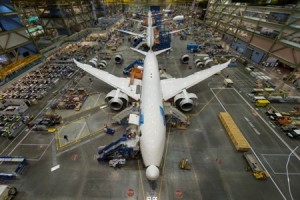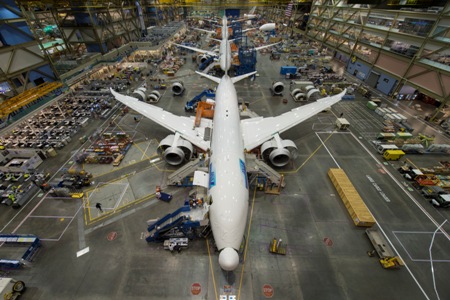 Some 38,050 new airplanes will be needed over the next 20 years, an increase of 3.5% from last year’s forecast and valued at US$5.6 trillion, according to a new report by Boeing.
Some 38,050 new airplanes will be needed over the next 20 years, an increase of 3.5% from last year’s forecast and valued at US$5.6 trillion, according to a new report by Boeing.
“The commercial airplane market continues to be strong and resilient,” said Randy Tinseth, vice president of marketing of Boeing Commercial Airplanes. “As we look forward, we expect the market to continue to grow and the demand for new aircraft to be robust.”
The American global aircraft manufacturer in its latest “Current Market Outlook” (CMO) released June 11 is upbeat about demand for both passenger and cargo aircraft.
By the end of the forecast period, the commercial airplane fleet will double, from 21,600 airplanes in 2014 to 43,560 airplanes in 2034. Fifty-eight percent of the 38,050 airplanes delivered over that time will be to accommodate growth.
Passenger traffic will continue to grow at about a 4.9% annual pace, near the historic trend line of 5%. More than 7 billion passengers will fly by the end of the forecast period.
Cargo traffic will grow at about 4.7% per year.
The Asia market, including China, will continue to lead the way in total airplane deliveries over the next two decades, predicts the report.
The single-aisle market continues to be the fastest growing, largest overall segment, requiring 26,730 airplanes over the coming two decades.
“These aircraft are the foundation of the world’s airline fleet, carrying up to 75 percent of passengers on more than 70 percent of the world’s commercial aviation routes,” said the report.
This sector is fueled by growth in low-cost carriers and airlines in developing and emerging markets.
Boeing forecasts that the widebody segment will require 8,830 new airplanes, led by small widebody airplanes in the 200- to 300-seat range. This year’s forecast reflects a continued shift in demand from very large airplanes to efficient new twin-engine products.
While airline growth still accounts for the majority of new demand, a large and growing number of aging aircraft will require replacement. About 2% to 3% of the installed fleet will require replacement each year.
Meanwhile the air cargo market continues to strengthen, and will drive demand for some 920 new airplanes over the 20-year forecast.
“We’ve seen two years of solid growth in the air cargo market and we expect that growth to continue,” Tinseth said.





